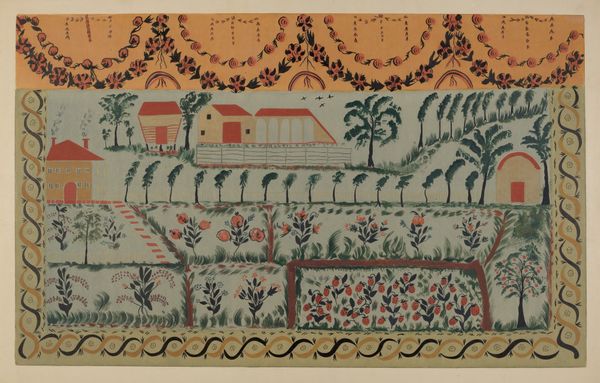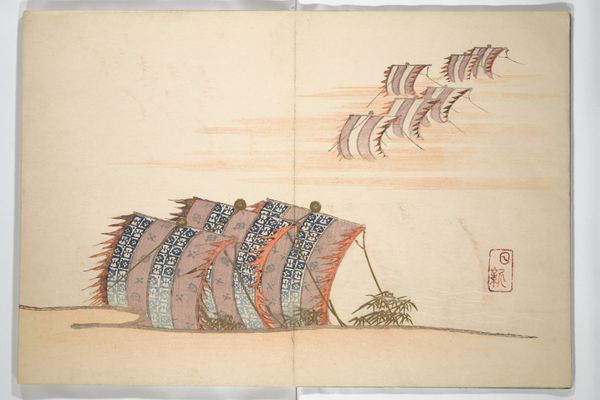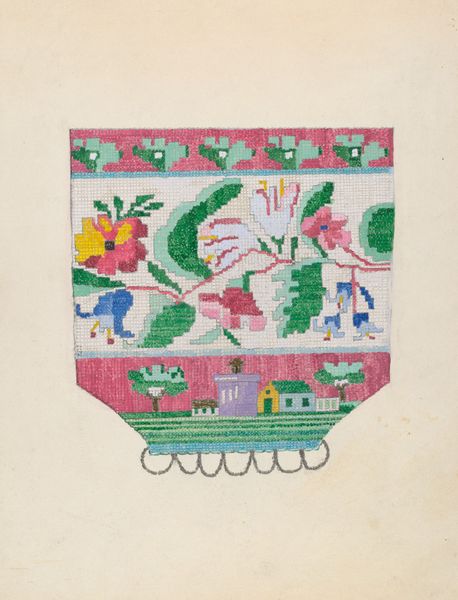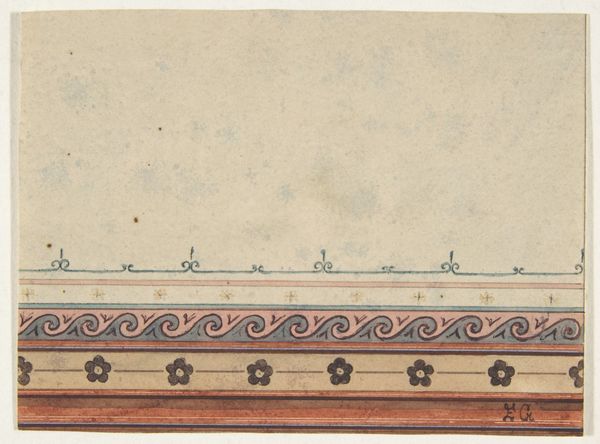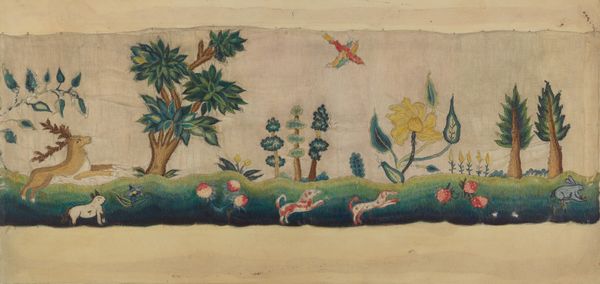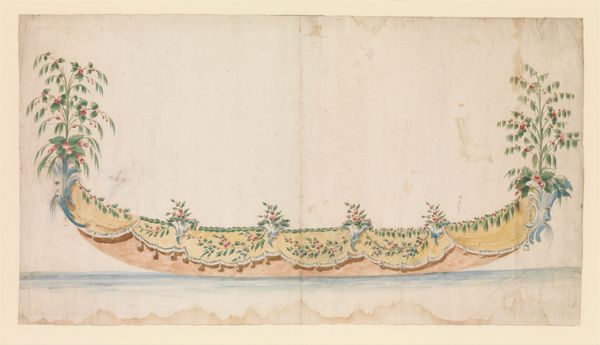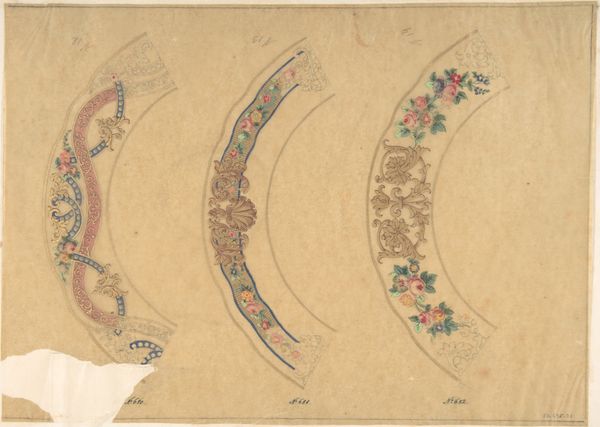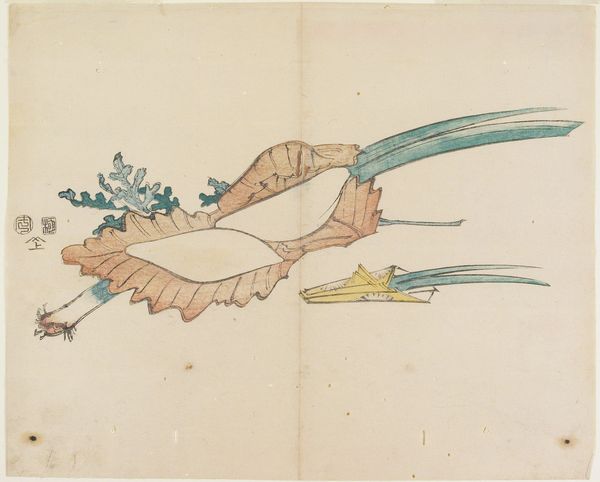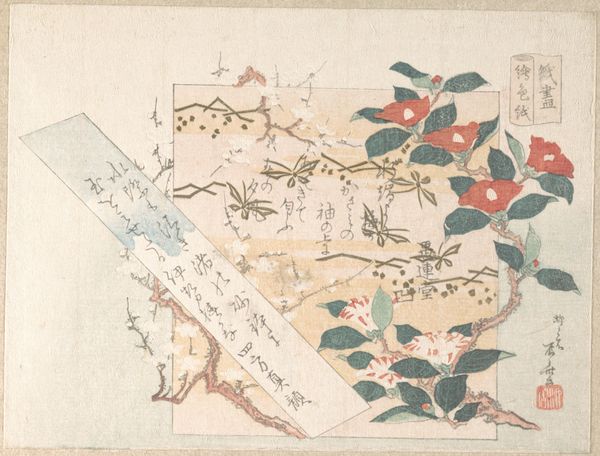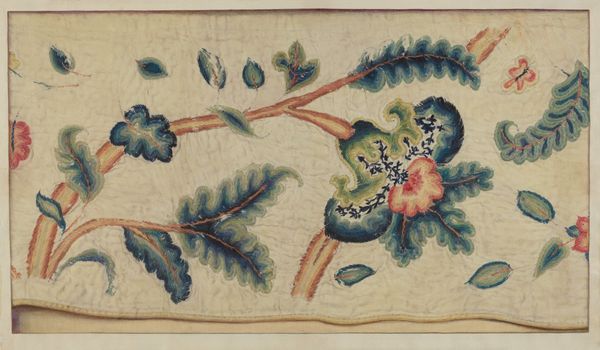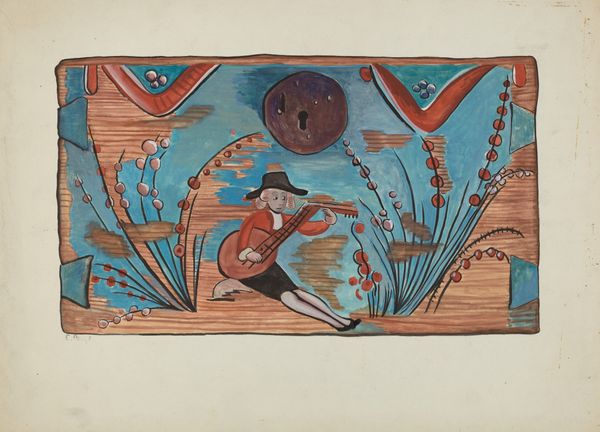
drawing, watercolor, pencil
#
drawing
#
neoclacissism
#
allegory
#
landscape
#
form
#
watercolor
#
coloured pencil
#
geometric
#
pencil
#
line
#
cityscape
#
history-painting
#
decorative-art
Dimensions: 10-3/16 x 13-15/16 in. (25.8 x 35.4 cm)
Copyright: Public Domain
Curator: This delicate drawing, aptly titled "Design for a Ceiling," was created by an anonymous hand sometime between 1700 and 1800. You can find it in the collection of the Metropolitan Museum of Art. What's your first take on it? Editor: It's remarkably airy and optimistic. The muted colors and open composition suggest a space designed to evoke lightness and joy. I imagine it providing quite the elevated experience! Curator: Exactly! Note how the composition emphasizes geometric forms – arches, lines, and carefully placed ornamentation work in concert. The architectural illusion created through precise lines lends the design an intellectual rigor characteristic of Neoclassicism. It seeks to ennoble. Editor: Indeed, while that might be its intention, it really is a very applied science to get all this geometry accurately designed, constructed, then installed into these locations. It shows an expertise and specialized knowledge in architecture. One could also discuss the drawing materials: pencil and watercolour offering different levels of portability when transferred to sites needing ornamentation and finishing touches. Curator: It speaks to the symbolic weight of allegorical motifs, too. Look closely. Can you decode those subtle, historical references and the ways they interplay with concepts of history, landscape, and even form itself? Editor: I'm more captivated by what such artisanal works demanded in this era. It isn't just the creative blueprint on display, but tangible marks left from hours invested by human hands: drawings which materialized concepts from mind to being thanks skillful making which blended mathematical thinking, visual insight... Even how pigment, ground materials would impact longevity when applied overhead so far away, invisible to maker most times Curator: You are reminding us that such ornamental designs also have strong ties with decorative arts practices. As such, you are pointing out important elements within broader culture; a historical snapshot through form but labour too – intriguing way that it can link various social histories! Editor: Right? Art's value shouldn't ignore the tangible processes; after seeing this gorgeous watercolour come off the page I have come appreciate unseen hands shaping past society one line/hue/texture onto life as much ever more present since becoming immortalized within ceilings adorning long rooms since gone silent but alive Curator: So very well articulated. Now I won’t just think of forms overhead only ever material production beneath... thank kindness.
Comments
No comments
Be the first to comment and join the conversation on the ultimate creative platform.
